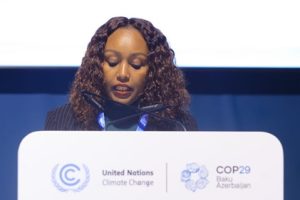BY GETACHEW MINAS
Major palm oil deforesters are usually sheltered suspects, whose hidden, veiled and concealed operations are difficult to trace. The latest report by H. N. Jong revealed that these offenders dominate the 2020 list of top ten palm oil companies responsible for palm oil-linked deforestation off the cost of Southeast Asia in the Indian and Pacific oceans.
Some of the top deforesters are shrouded in secrecy, with scant information about them publicly available. The year 2020 saw the lowest amount of palm oil-driven deforestation in three years, likely due to the COVID-19 pandemic. However, it is projected that a resurgent domestic market, coupled with rallying palm oil prices, could fuel further deforestation.
A new analysis reveals that deforestation due to palm-oil production is slowing down in Southeast Asia in 2020. But, a handful of low-profile companies continued with large scale destruction. Chain Reaction Research (CRR), a sustainability risk analysis organization, more than half of the land subjected to deforestation for oil palm plantation was given in concession to only ten companies.
Most of these companies also appeared in the list of top deforesters, and their products also end up in the supply chains of major global brands. These global entities have “no deforestation, no peat land exploitation” (NDPE) policies.
The CRR reported that this highlights “both” the failure of many buyers with NDPE policies to adequately implement their policies and the risk of leakage markets.
Researchers pointed out that the activity of deforestation is mainly distributed to several companies, with the major ones being responsible for a third of the devastation. Those major companies are all owned by families and account for a large area of land.
The major palm oil deforesters in the Southeast Asian countries a list are companies owned by a little-known businessman. The CRR analysis identified extensive portion of land deforested for oil palm plantations. This has continued for years by companies that have ranked the highest among deforesters.
Of the plantations in question, one alone contributed the largest amount of deforestation, with several hectares of forest cleared. Here, one should be clear that deforestation precedes plantation of palm trees with the objective of producing palm oil.
There is little public information about the major company that produces palm oil, despite consistently being high deforester. It is shrouded in secret, and its closely held business group is a clique. In its report, Greenpeace linked a billionaire family in one country with another similarly operating family in another Southeast Asian country.
These families are conglomerates, both being major players in the palm oil industry. They are also listed as managers and shareholders in many family ventures in an opaque way.
The opaqueness of the business suggests that the palm oil produced from the deforested land may be finding its way into the “global” market through major brands undetected, a practice known as market “leakage.” The question is whether Africa, including Ethiopia, have enjoyed or suffered from this leakage.
Palm oil may leak into markets in collaboration with corrupt officials. They may encourage the crime of deforestation for palm oil production that finds its market in Africa, as every product has to find its market destination one way or the other.
Major suppliers of palm oil do not divulge the source of the product nor do they reveal the secrets of business operation. They may not appear to own or operate any mills, though their companies are listed as direct suppliers to companies with NDPE policies. According to CRR, it is likely that the company sells the palm fruit to third-party mills.
These mills then go on to supply the global brands, as discovered by an investigation. It has found that a subsidiary, selling palm fruit to a mill that delivers the processed palm oil to several companies with NDPE policies! The global network of distribution reveals that those companies that have made public commitments to purge their supply chains of deforestation have failed to do so, except one of them.
When the alleged market leakage was reported in 2020, one of the companies reported that it had requested its suppliers to suspend all activity. Others said that they had launched their own internal investigations and would take corrective actions if needed.
They also added that they did not find their suppliers of palm fruit doing “nothing” wrong. In the list of the CRR of major palm oil deforesters, a privately held plantation company with a large size of land appeared in the list of top deforesters in the past few years, but dropped out, before making an appearance again.
Major suppliers to traders/refiners and consumer goods companies with NDPE policies did not have any commitment to sustainability of natural resources.
A report by CRR alleges that one of the suppliers is controlled by a major oil company. But, it had denied the allegation, saying that it is not affiliated either financially or operationally to any supplier. But, it still supplies major companies with prominent trademarks that “espouse” sustainability commitments.
Apart from the veterans there appear newcomers appearing for the first time. There is, however, little publicly available information on this group and they do not appear to operate palm oil mills.
They cannot be connected to consumer brands with NDPE policies. A mixture of old and new names make up the list, with offenders making an appearance repeatedly.
Production and exports of palm oil contracted in the first half of 2020, while prices slumped across commodities markets. Palm oil production rebounded in the second half of the year, however, driven by stronger domestic demand, leading to an increase in palm oil prices. CRR warned that this could spell greater deforestation. Rise in domestic demand for palm oil may lead to vast increase in the development of land for growing palm trees in 2021. Observers of this reality opined that based on market demand, it is wise to look for alternative enterprises to palm oil production.
Giant companies may probably engage in other enterprises producing, for example, soybean, sunflowers or strawberries. This may, however, result in a cutthroat competition for land or grabbing of land to expand territories of influence. Researchers urge better protection of wetlands as they continue to vanish and all oak species are threatened with extinction.
Reports assert that there are controversial hunt for a multibillion-dollar treasure in deforestation of parks, to be replaced with palm oil trees. Southeast Asian wild pigs confront deadly swine fever epidemic with deforestation. In reaction to this epidemic, there are periodic broadcast of news and inspiration from concerned media agencies.
The media may defend protection of forests through exposure of malpractice related to deforestation. They may engage in special series exposing forest trackers that contribute to the destruction of key habitat for wild animals such as lion, tiger, elephant, leopard and other species. Indigenous wild animals are threatened by land grabbing and drug trade.
Indigenous communities live in fear as they are threatened by drug traffickers who invade land for cocaine the production of which leads to deforestation of national parks. These communities are also exposed to and endangered by drilling crews that destroy huge forests in search of oil resources.
Conservation of forests may be more resilient, robust and resistant to a “drying” climate, contributing to environmental protection. But, corrupt officials of agencies responsible for conservation may engage in the destruction of forests themselves.
Studies show that indigenous people in some countries blast and condemn government agencies that “legalize” deforestation for securing land for planting palm oil trees and other forest yields.
To soothe objectors, land rights may be issued for timber plantation and production toward developing “peace parks.” Studies also point out that those tribes in Southeast Asia move to block clearing of their ancestral forest for palm oil tree plantation. The guardians of the forest protesters the takeover of large mountain pastures by state agencies.
Endangered environmentalists that are threatened by loggers have attracted the attention of global human rights institutions for preserving the environment. These forest guardians argue that it gives them food, culture and life. It restores and maintains the ecosystem.
The indigenous communities defend rainforests until their land rights are recognized. Studies show that the native forest guardians are efficient and effective in the conservation of forests.
These communities have won global recognition for saving lakes and for growing new corals to save reefs. These studies proved that customary solutions are more effective in the restoration of natural resources.
Deforestation spurred by road project creeps closer to wildlife haven, destroying their habitat. Unless serious measures are taken, forests disappear in the process of expanding commercial farms and constructing roads to serve them.
The Ethiopian Herald February 18/2021





